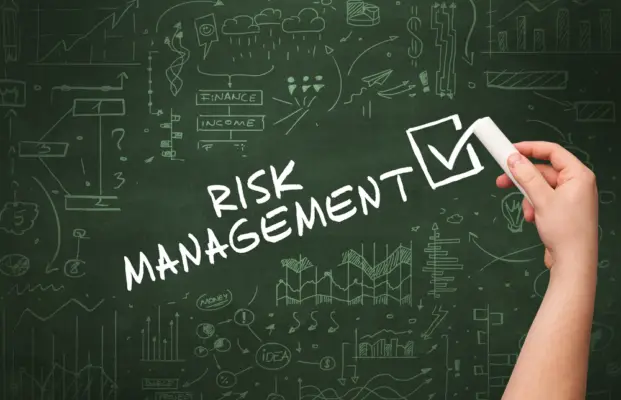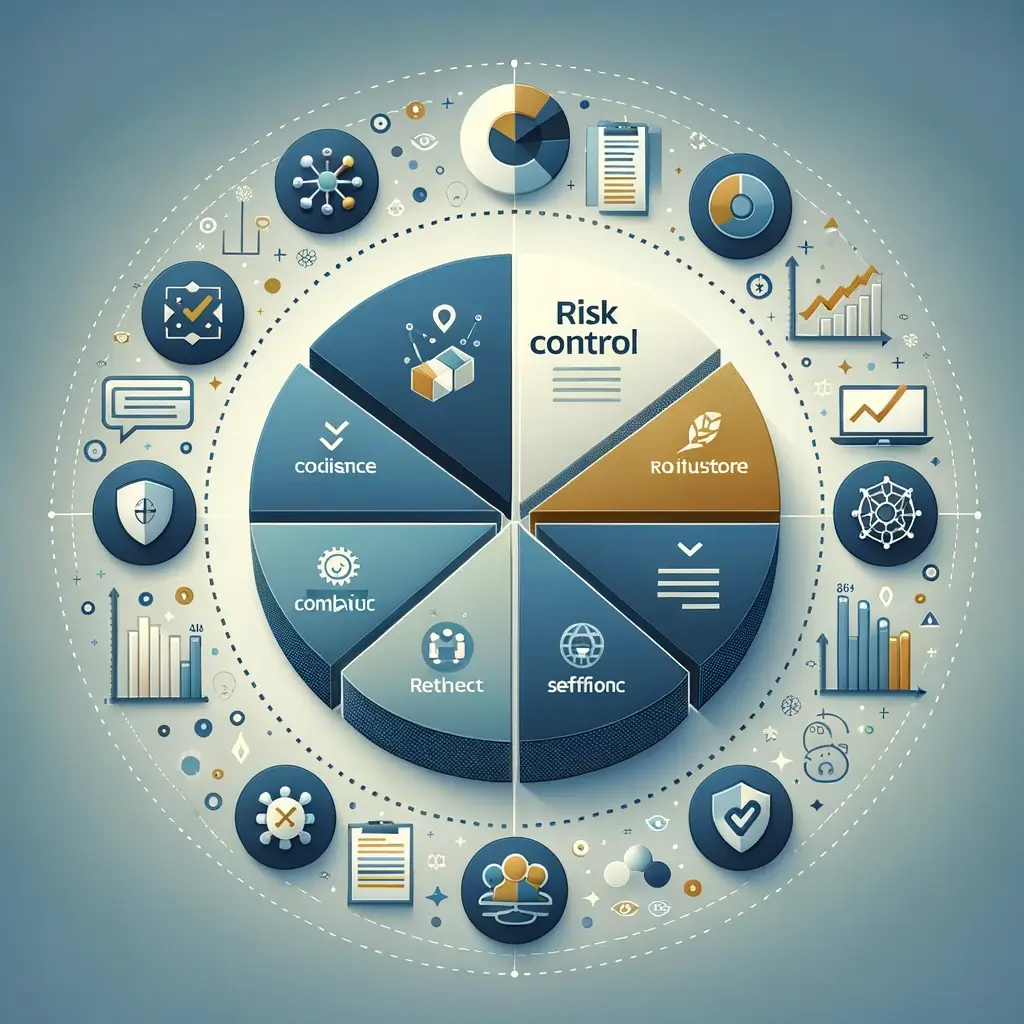In the increasingly volatile business world, risk control self-assessment has emerged as a vital component for ensuring sustainable growth and resilience. The following methods best present effective risk control self-assessment.
- Document control environment: This involves documenting the current control environment, including existing policies, procedures, and control activities (source: 360Factors).
- Identification of risks: This involves identifying potential risks that could impact the organization’s objectives, including operational, financial, and strategic risks (source: 360Factors).
- Risk evaluation: This involves evaluating the likelihood and impact of identified risks and prioritizing them based on their level of risk (source: 360Factors).
- Control identification: This involves identifying existing controls to mitigate identified risks and evaluating their effectiveness (source: 360Factors).
- Avoidance: Avoiding risks altogether by not engaging in activities that could lead to the risk (source: Investopedia).
- Loss prevention and reduction: This involves implementing measures to prevent or reduce the likelihood of loss if a risk occurs (source: Investopedia).
As professionals navigate complex markets and business landscapes, a comprehensive understanding and implementation of effective risk control methods has become paramount.
This article delves into the core methodologies surrounding risk identification, prioritizing, control techniques, and the integral role of frequent and regular monitoring in moldings a robust risk control system.
Identifying and Prioritizing Risk
Businesses in all industries, no matter their size or age, are subjected to an array of risks. These hazards can come from a plethora of sources – they may be financial, operational, reputational, or legal, among others.
The challenge for savvy entrepreneurs is to accurately identify these risks and prioritize them accordingly so that the company can weather potential storms and bounce back stronger. Here’s how:
Understanding the Business Landscape
Proper risk identification starts with a thorough understanding of the business landscape. Review your industry trends, market shifts, and potential disruptions.
Look closely at your suppliers, customers, competitors, and regulatory changes. The aim is to identify potential threats that could materially impact your business.
Carrying Out Risk Assessments
A systematic approach to detecting risks is through a comprehensive risk assessment. This involves identifying the risks you could face, assessing their impact and likelihood, and planning appropriate mitigation strategies.
A good risk assessment should be thorough, with inputs from all levels of the organization.
Creating a Risk Register
A risk register serves as the central repository of all identified risks. It outlines the nature of the risk, its severity, potential impacts, and the strategies employed to mitigate it.
To be effective, it should be regularly updated and reviewed by the management team.
Engage in Continuous Monitoring
Risk identification and prioritization is an ongoing process. Constant monitoring of internal processes and external events like market changes or regulations is key.
This ensures your business is always prepared to tackle new threats as they emerge.
Encouraging a Risk-Aware Culture
From board members to front-line staff, everyone in the organization should know the importance of risk management.
Regular training and communication can help foster a risk-aware culture, ensuring risks are promptly identified and assessed.
Engaging External Expertise
Sometimes, it’s beneficial to seek a fresh perspective. Engaging external consultants can bring new insights and expertise to your risk management process. They can help identify blind spots and may provide innovative risk mitigation strategies.
In essence, risk management is not a box-ticking exercise. Managed effectively, it offers businesses strategic advantages – resilient operations, improved business decision-making, and increased stakeholders’ confidence. Navigating risk is a journey, not a destination.
It’s about building a process that is robust, flexible, and dynamic, capable of evolving as the business grows and responds to its changing environment. Failure to manage risks effectively is not an option — it’s an integral aspect of entrepreneurial success.

Risk Control Techniques
Leveraging Technology and Data Intelligence
In this rapidly evolving digital age, pushing the envelope on technology and data intelligence is one of the most promising ways of mitigating business risks.
AI and machine learning can significantly enhance business insights, unveiling potentially destructive patterns and weaknesses. Using predictive analytics, businesses can foresee and navigate potential obstacles, reducing downtime and increasing productivity.
Implementing Effective Communication Channels
It’s a given fact transparent and efficient communication is critical in risk management. Sharing information across teams and hierarchies nips issues in the bud before they snowball.
It may be a bi-weekly chat to dissect arising concerns or a digital dashboard for real-time progress checking. Still, the impact of effective communication channels on risk control cannot be understated.
Taking the Route of Financial Hedging
Entrepreneurs with an eye on reducing financial risks often resort to hedging as a defensive strategy. By diversifying investments, businesses can minimize potential losses.
Similarly, futures, options, or forward contracts can act as financial cushions against the market’s volatility, plummeting exchange rates, or sky-rocketing commodity prices.
Adopting Business Continuity Planning
A far-sighted approach to risk management includes designing strategies that ensure businesses’ survival in catastrophic events.
Business continuity planning (BCP) is about making provisions for a fast pivot in service delivery or product generation in case of unforeseen disruptions. This resilience keeps crucial business elements on track, preventing financial hemorrhage and reputational damage.
Practicing Regular Audit and Compliance Checks
The business terrain is ever-changing, and to stay ahead, regular compliance checks and audits are essential. These checks ensure the enterprise follows industry regulations while pinpointing areas that demand improvement.
They provide the opportunity to stay current, averting the colossal legal fines and penalties often accompanying non-compliance.
Building Alliances for Risk-Sharing
Last but certainly by no means least, forming strategic alliances is a crafty way of distributing risks and costs. By tying up with a kindred enterprise, organizations can share the costs and risks of innovation or venturing into new market terrains.
Such alliances can also provide an invaluable buffer during challenging economic times or when undertaking high-stakes projects. It is the epitome of strength in numbers, literally.
The risk control sphere is multifaceted, layered, and ever-expanding. While the above-mentioned techniques are powerful, their combined implementation can provide an unyielding managerial tool.
Thus, entrepreneurs must actively adopt these strategies, continually innovating their approach to stay ahead of the game in an increasingly competitive business world.

Frequent and Consistent Monitoring
In business operations, the organization’s lifeblood depends greatly on identifying, managing, and mitigating risk vulnerabilities.
Constant and consistent risk monitoring within risk control self-assessment is not merely a recommended strategy; it’s a critical factor for survival and growth.
Identifying Risk Patterns:
It’s quintessential to spot patterns in risk behavior within an organization. Patterns may appear when specific actions precipitate adverse consequences; frequent monitoring helps pinpoint these sequences and design relevant interventions.
Exploiting Opportunities:
Not all risks are born equal. The process of enterprise risk management also encompasses locating and capitalizing on opportunities camouflaged as risks.
Continuous monitoring helps you find these hidden gems and exploit them to the business’s advantage.
Enhancing Decision-Making:
Astute decision-making relies on accurate and timely information. Routine risk monitoring serves up this high-quality data, facilitating strategic decision-making crucial for a company’s productive evolution.
Preemptive Measures:
It’s easier to stymie a risk before it escalates into a full-blown crisis. Through regular monitoring, businesses can identify budding issues and nix them in the bud.
This proactive approach helps prevent minor mishaps from snowballing into disastrous nightmares.
Tailoring Risk Strategies:
A one-size-fits-all approach is counterproductive in risk management. Each risk profile is unique to the organization and requires a tailored approach.
Monitoring allows you to modify these strategies when the risk environment morphs, ensuring your tactics are always attuned to the specific needs of each risk profile.
Role of Technology:
Today, traditional risk monitoring methods are being sidelined in favor of more robust, technologically advanced solutions.
Integrating data analytics, cloud computing, and blockchain reframes how risks are identified, analyzed, and mitigated. Businesses willing to innovate and adapt have a competitive edge.
Indeed, in this cutthroat environment where businesses compete not merely to succeed but to stay alive, regular and consistent risk monitoring is an absolute necessity.
It empowers businesses to foresee dangers and act proactively instead of merely responding to fallout. Ultimately, it cultivates a resilient, agile enterprise ready to face whatever challenges the business landscape offers.

Conclusion
Tackling the multifaceted nature of business risk necessitates a thoughtful and thorough approach to risk control self-assessment.
Employing cutting-edge strategies in risk identification, utilizing strategic risk control strategies, and consistently tracking potential risk triggers, businesses can foster a proactive culture geared toward risk management.
This not only bolsters their resilience in the face of adversities but also empowers them to leverage the inherent opportunities within these risks, thereby propelling the business forward in its journey towards success and sustainability.

Chris Ekai is a Risk Management expert with over 10 years of experience in the field. He has a Master’s(MSc) degree in Risk Management from University of Portsmouth and is a CPA and Finance professional. He currently works as a Content Manager at Risk Publishing, writing about Enterprise Risk Management, Business Continuity Management and Project Management.

